 | | | Collecting and preserving meteorites since 1998. |
| |
|  |
|
|  |
From Michael Cottingham:
"While searching for arrowheads, one stone meteorite weighing 4.798kg was found by Ronnie Nowell, near La Luz, New Mexico in 2007. This meteorite has been classified by The University of New Mexico as an H4 Chondrite, with a Shock Stage of S2 and a Weathering Grade of W3.
Most of this meteorite material is remaining in the main mass and Only about 600 grams are being released to the collecting community.
One of the UNM researchers had this to say about the La Luz Meteorite:
"The sample is composed of ~50% well-defined chondrules set in a clastic matrix of silicates and opaques. Chondrules mostly range in size from 50 to 400 mm; rare chondrules are 600 mm to 1 mm in diameter. Olivine is the most common mafic silicate in the sample but some low-Ca pyroxene is also present. Several types of chondrules are present including barred olivine, porphyritic olivine, radial pyroxene, and compound. In plane polarized light the entire section is stained brownish-red. Oxidation is mostly in veins and matrix but silicates also have a reddish staining. Few metal grains are visible in reflected light. Most olivine grains exhibit sharp optical extinction, but a few show undulatory extinction."
The main mass of La Luz is indeed in a private collection, and we're not cutting it in the forseeable future. So, ~600 grams are available. It's pretty stuff - lots of chondrules, metal, etc. We purchased two extra pieces: once they're gone, good luck finding any.
20.48 grams - $400

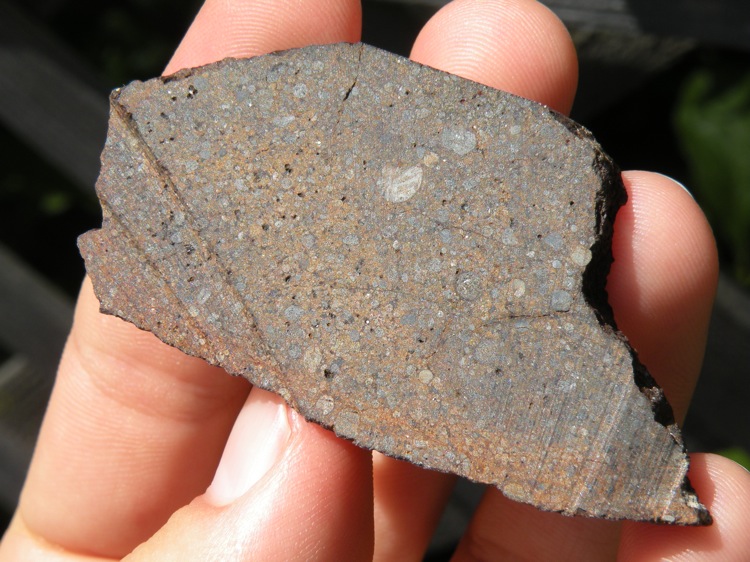
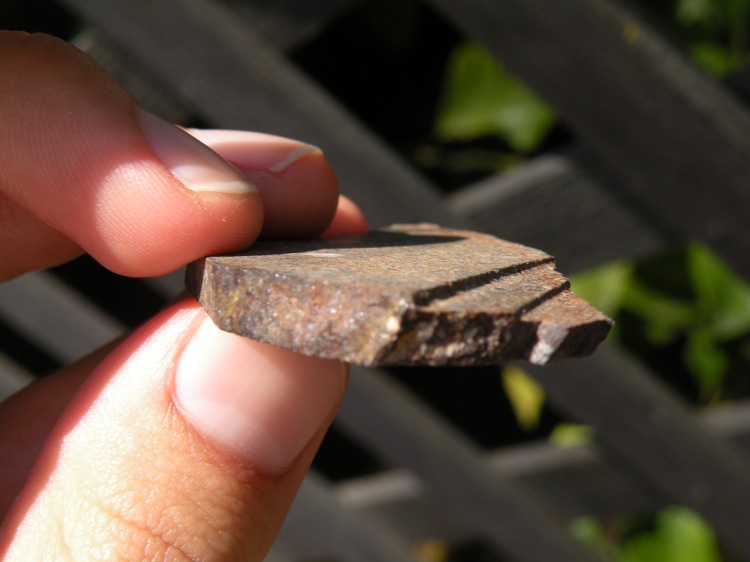 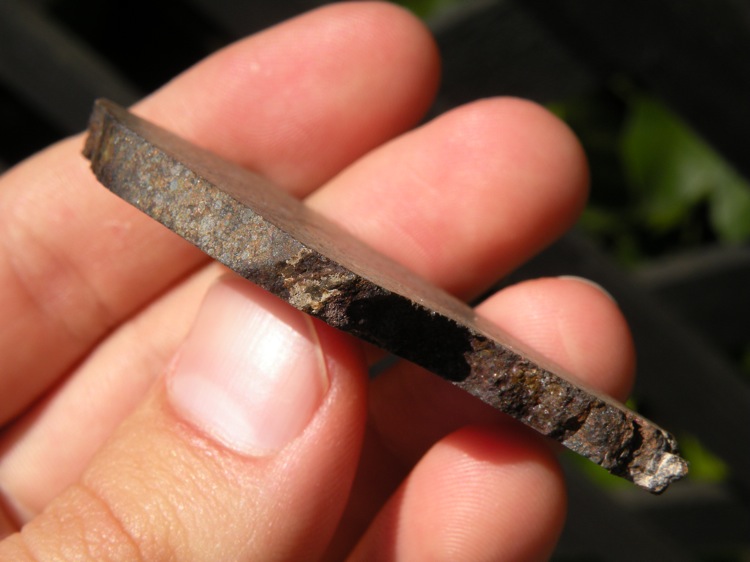
A nice 20.48 gram part-slice that was unfortunately not cut by ourselves or Marlin Cilz. One side is fine, but the other has some saw marks (you can't see them at all from the front, but they are pretty deep).
But note - this specimen constitutes ~1/30 of this material that is and will be available to the public. I don't know how many pieces out there are bigger than this one, but it's not a large number.
This slab has beautiful, distinct chondrules, as well as an edge of weathered fusion crust (see top photo, bottom edge of slice). Smaller pieces have been routinely selling for $25-30/g+ on ebay.
$400
Send an Email
9.246 grams - $225
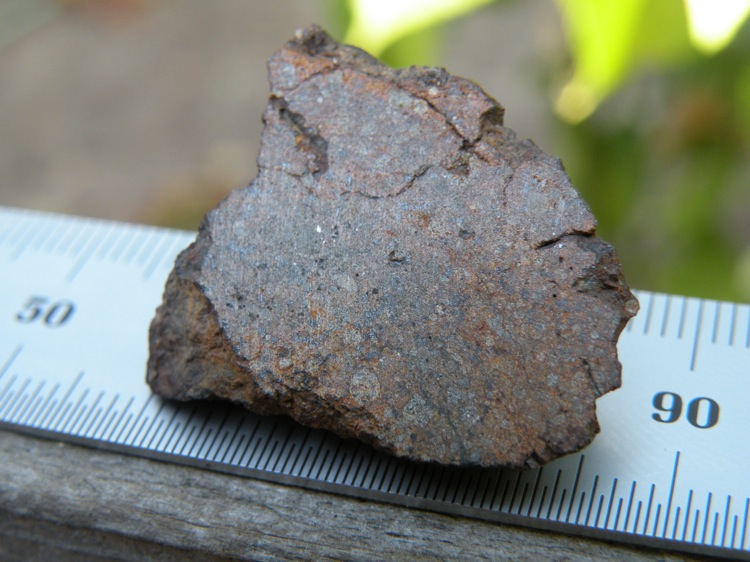
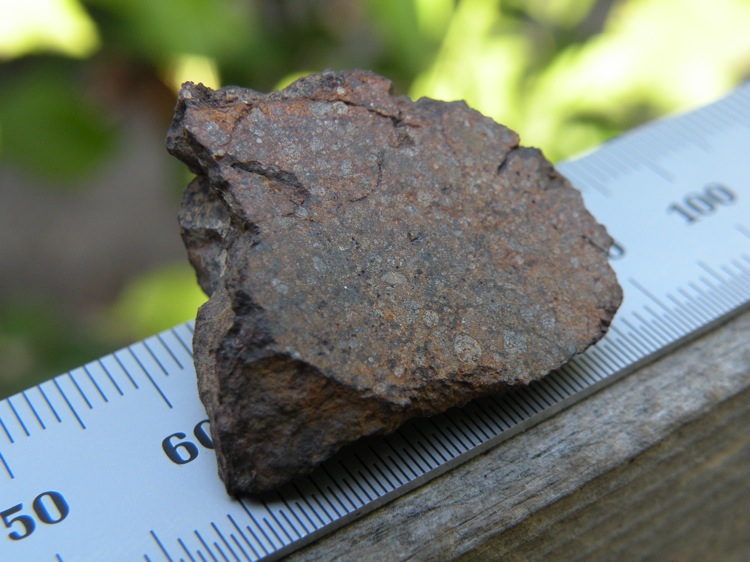
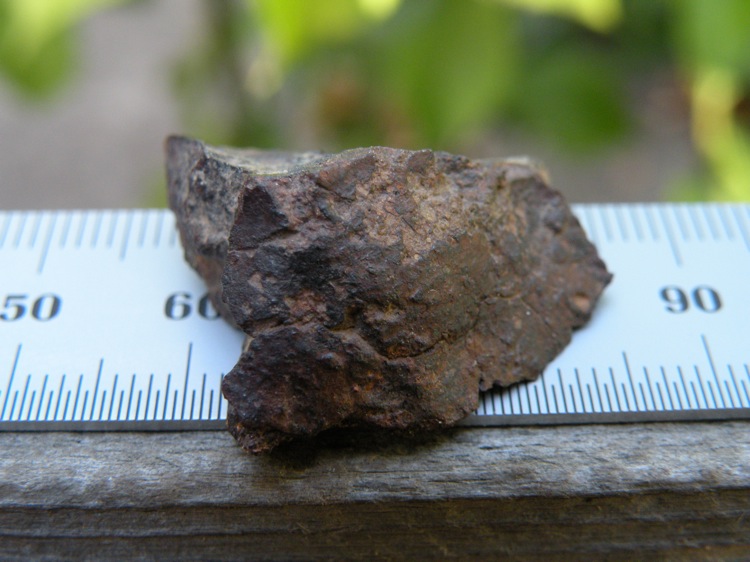
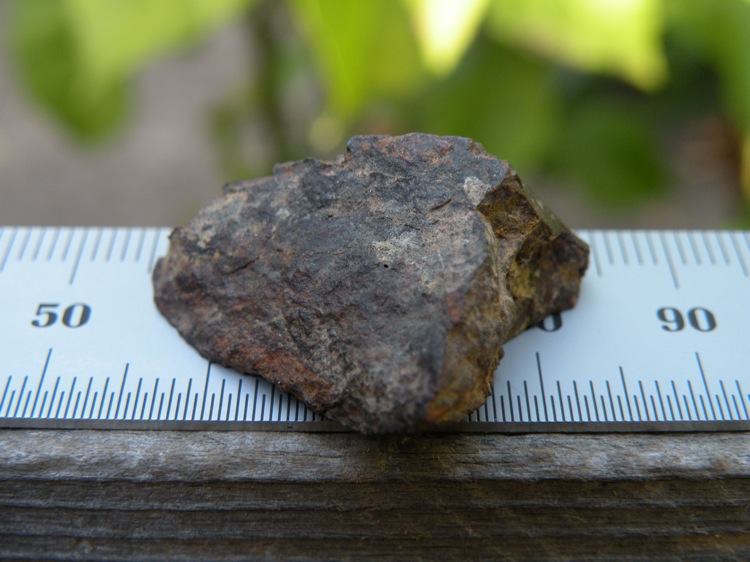
The above specimen is a 9.246 gram cut fragment. The main mass of this meteorite was transected by a number of fractures that formed due to weathering, and it looks as though this piece was created when one of the cuts through the main mass hit one of these cracks. That said, the cut face of this endcut displays abundant chondrules typical of La Luz, and the rear of the specimen is about 45-50% weathered fusion crust (see third photo), making this a fine example of this uncommon American meteorite (interior, exterior, etc.).
The fractures that make up the outer ~50% of the rear of this piece are coated with a fine layer of caliche (the tan discoloration visible in the photos), so we know that they were old natural fissures.
This piece is a little more per gram because it's significantly smaller than the other one - I doubt you'll find a nicer example of this meteorite any time soon.
$225
Send an Email
|
| | |
|
